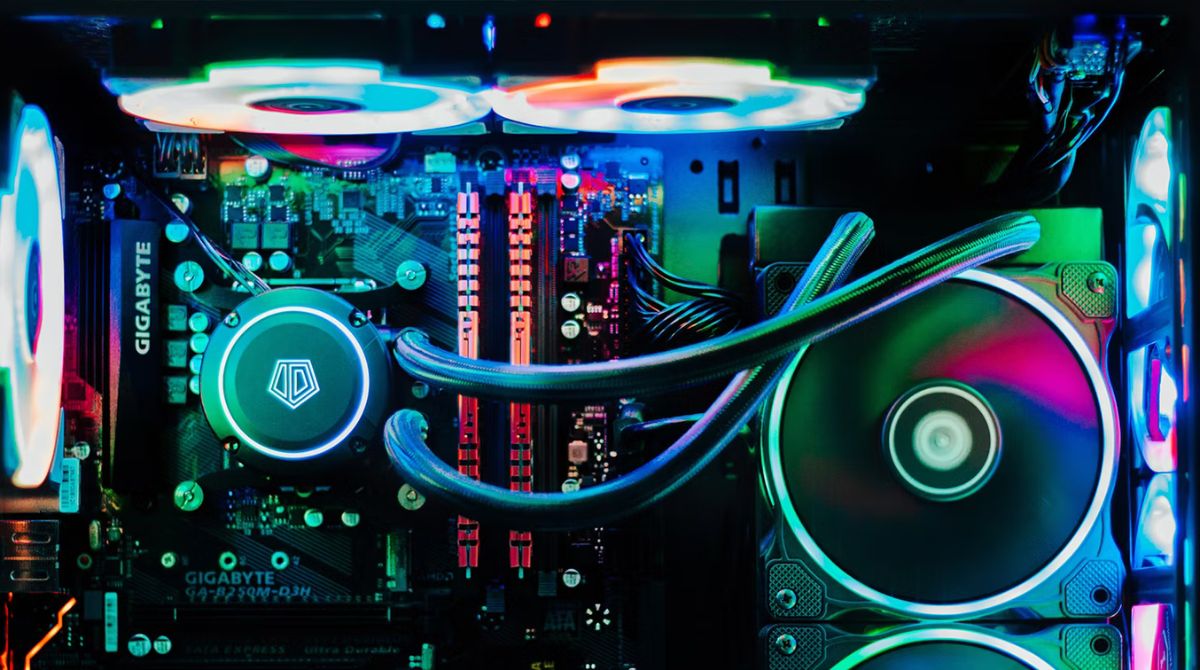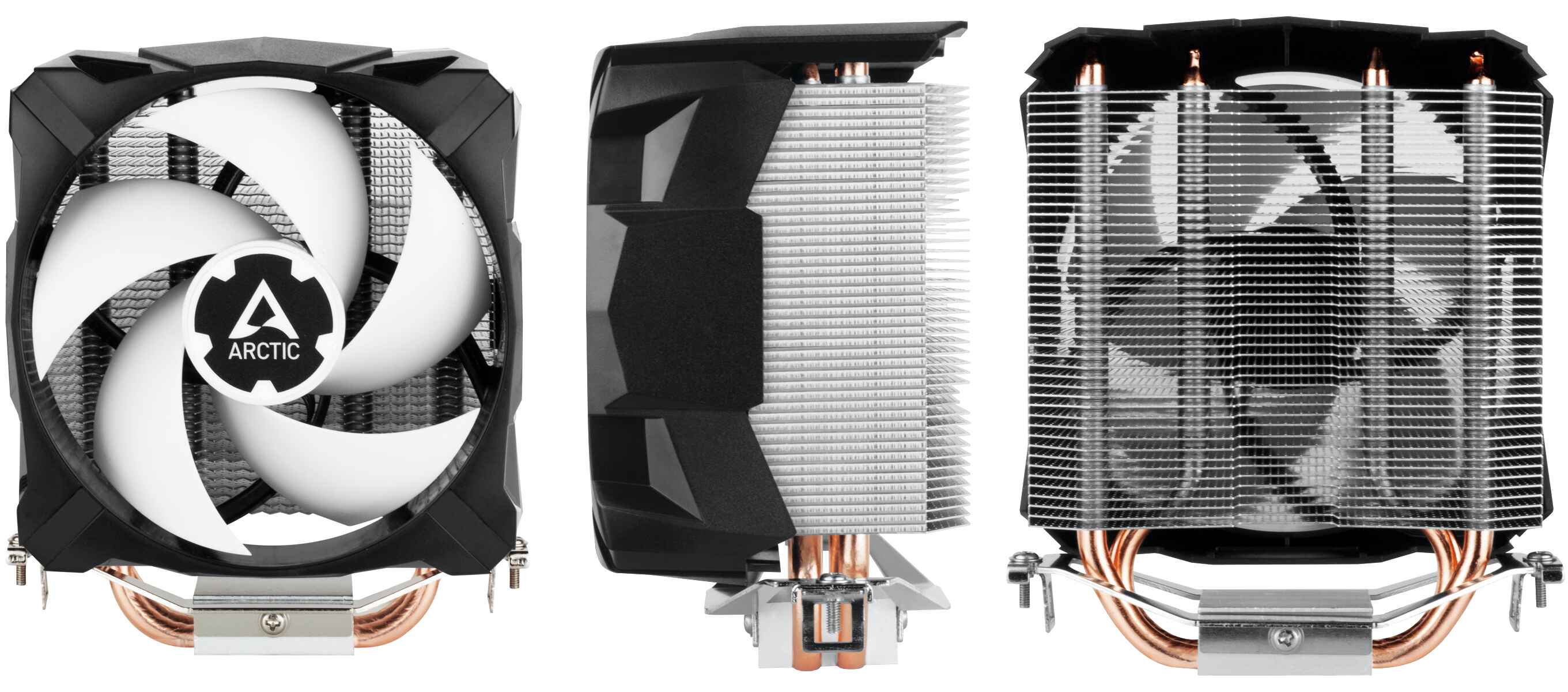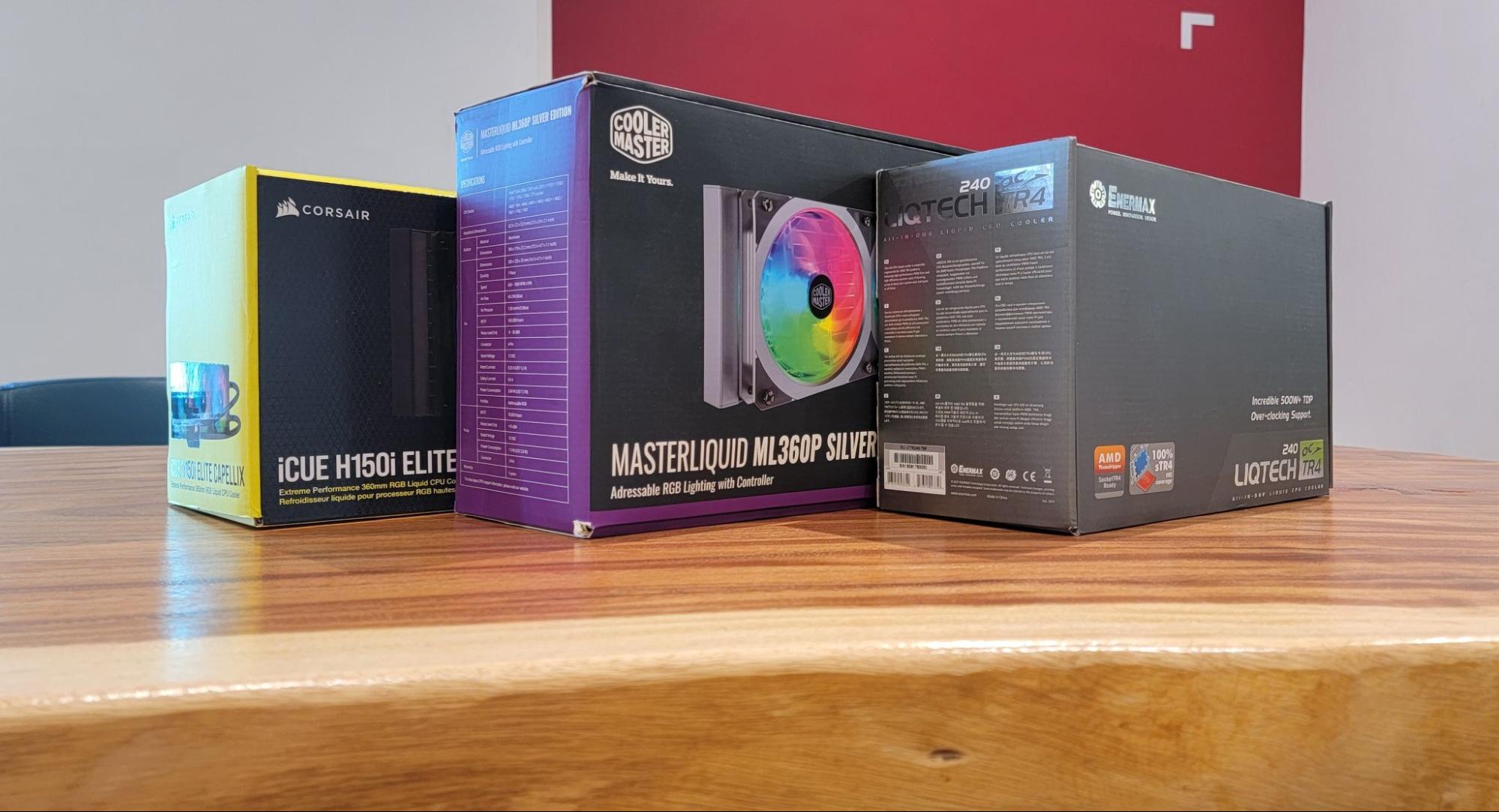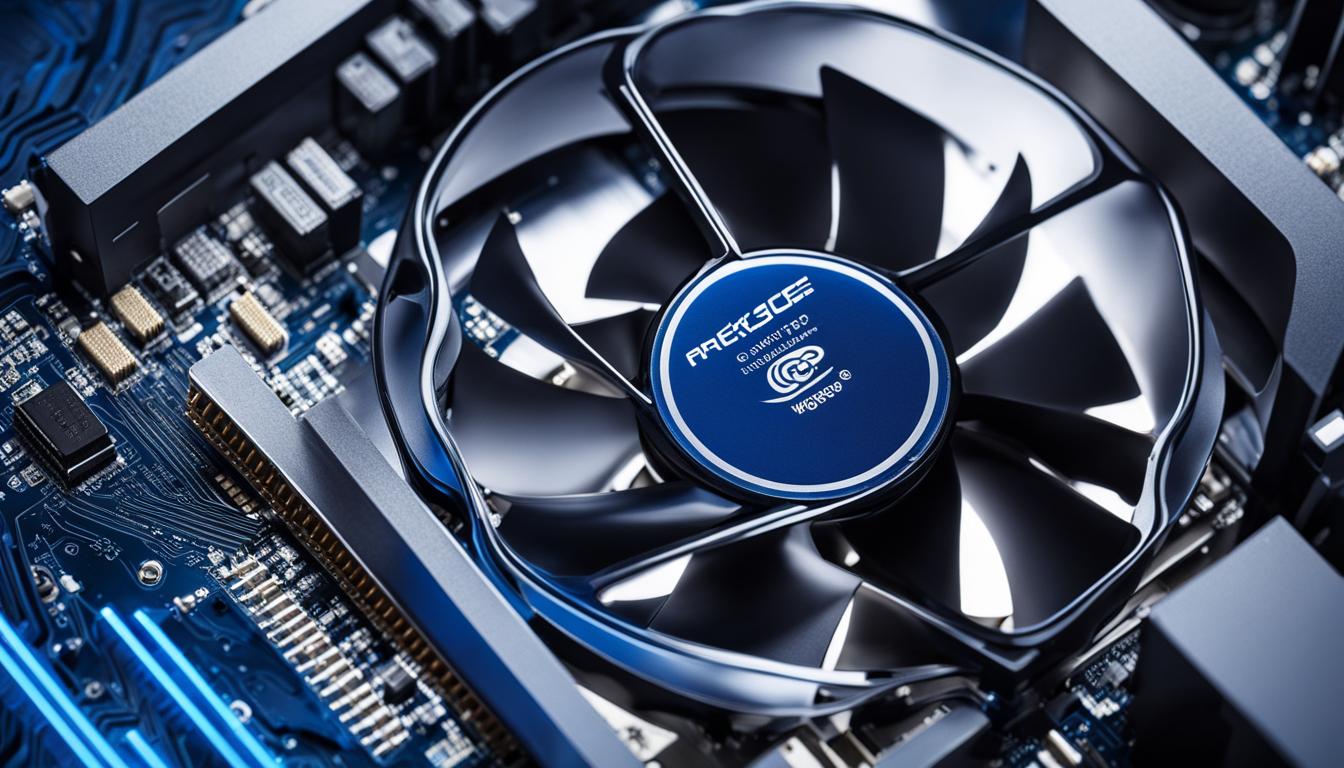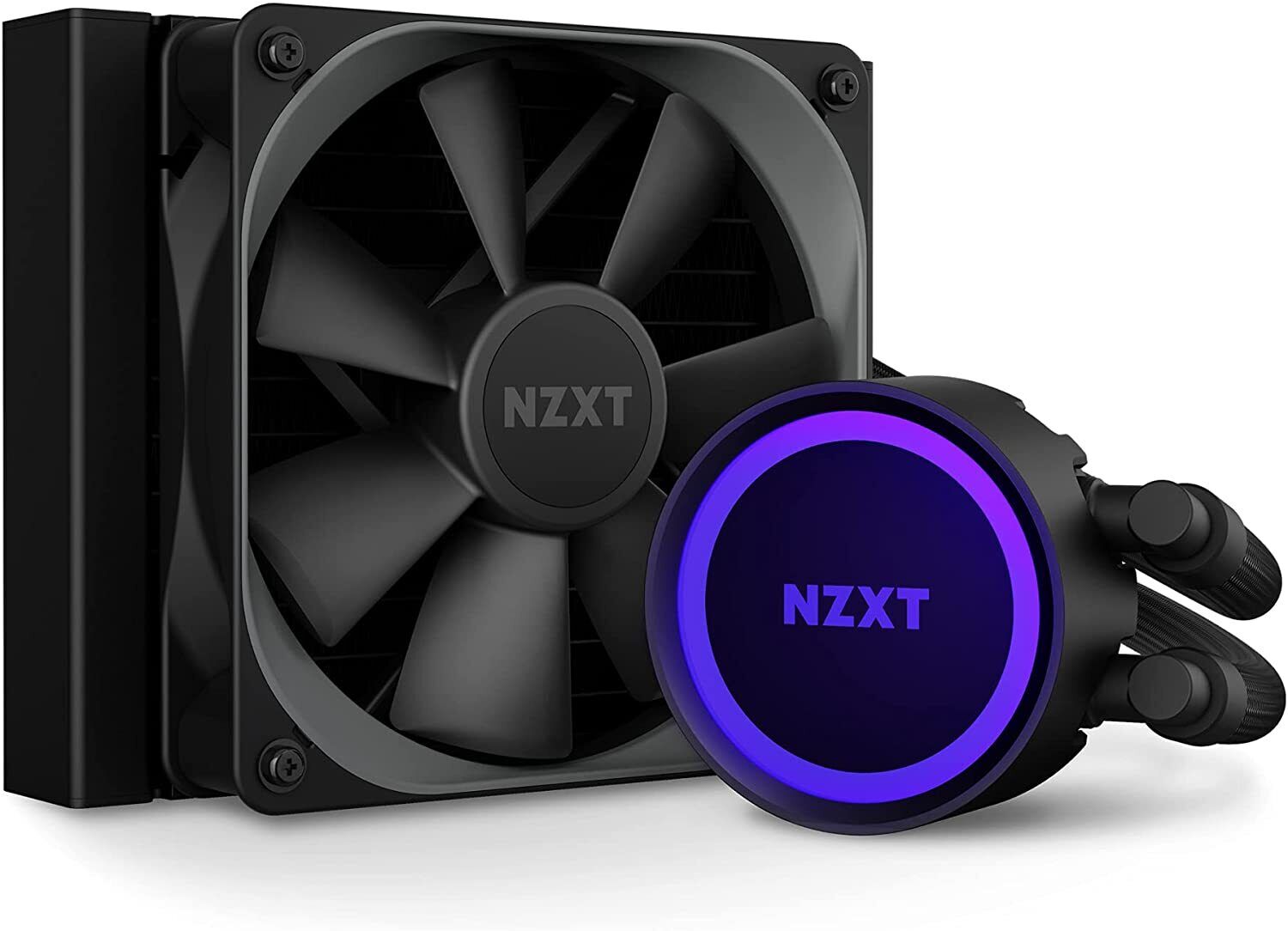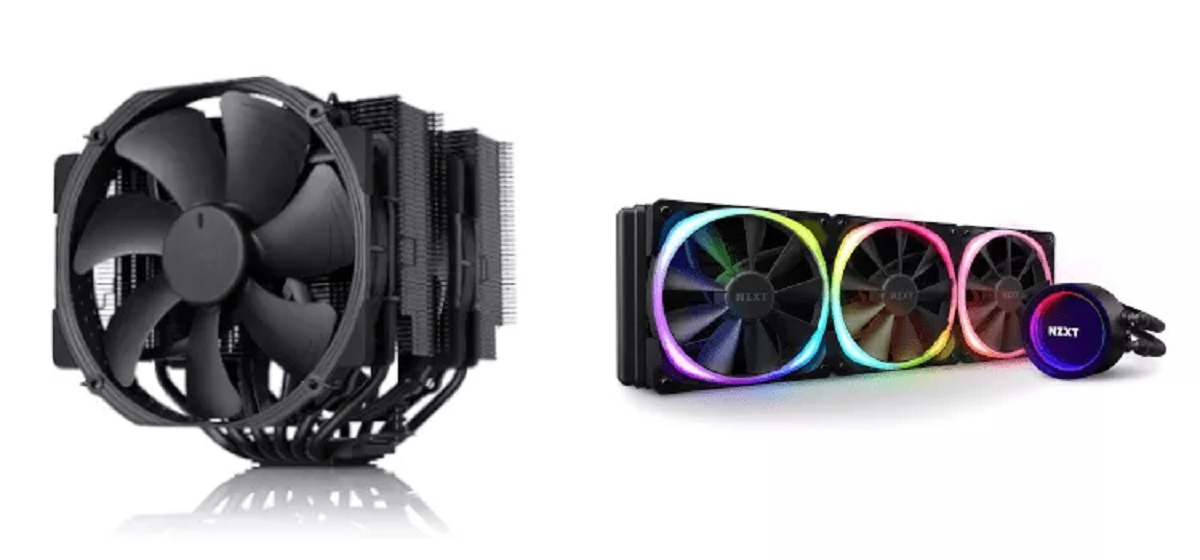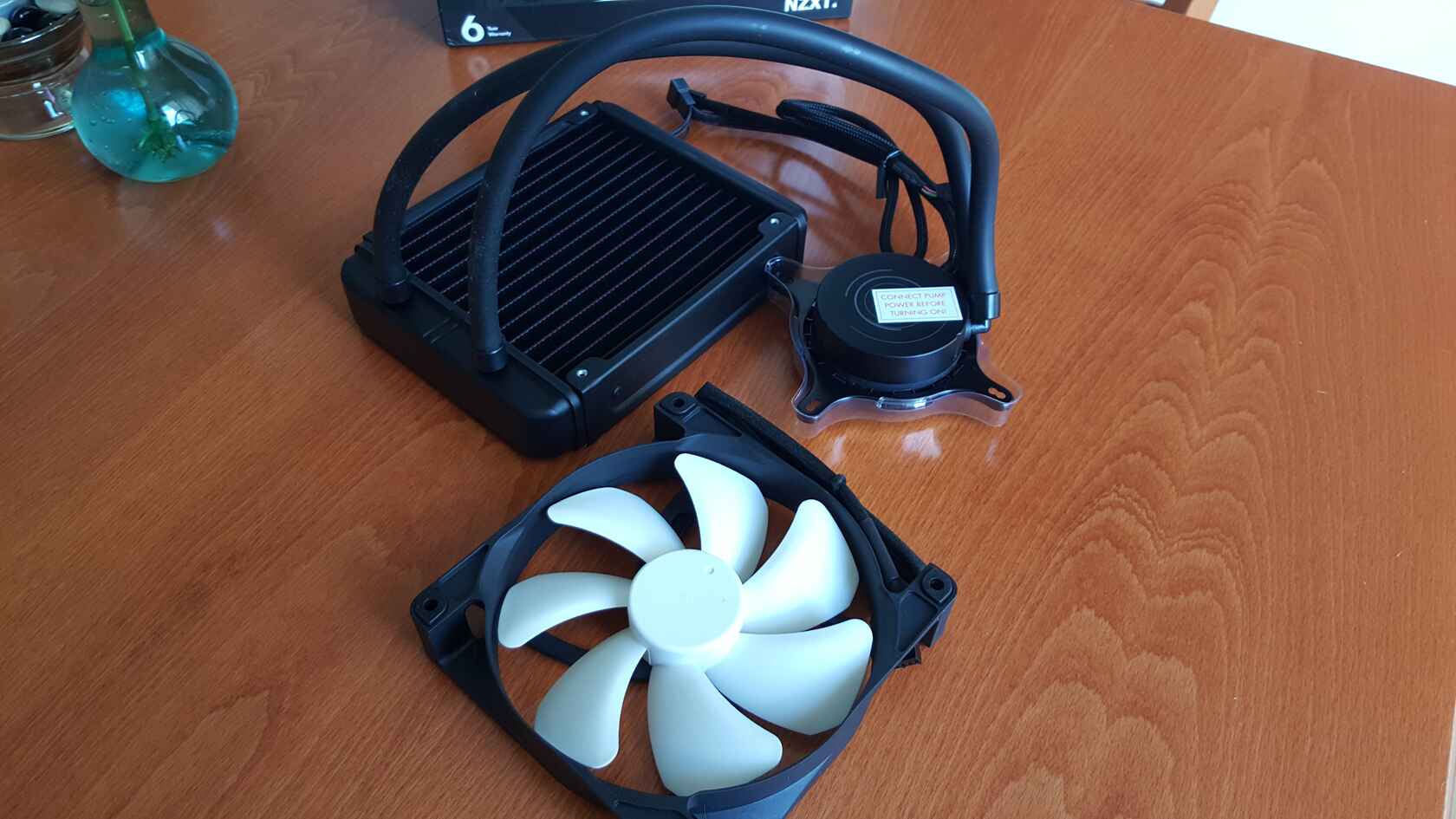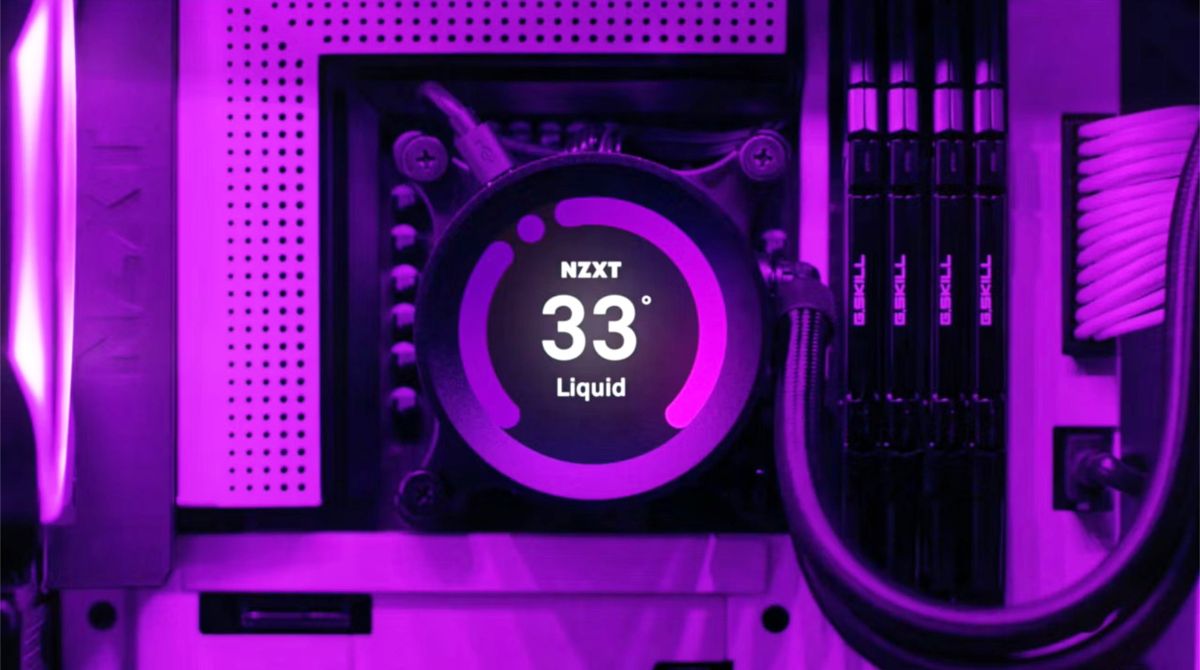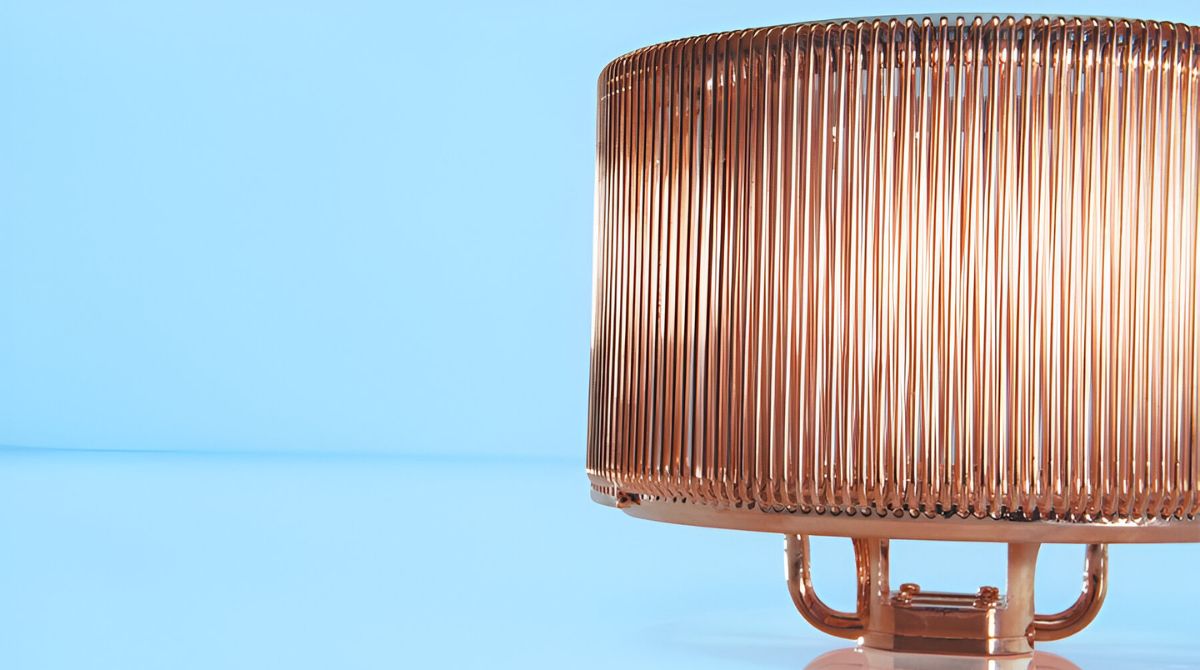Introduction
Welcome to the world of CPU cooling, where efficiency and thermal control are key factors in ensuring optimal performance and longevity of your computer’s processor. Whether you’re a seasoned PC enthusiast or just starting to dive into the realm of computer hardware, understanding the importance of cooling is vital.
One popular solution in the cooling landscape is the AIO CPU cooler, or All-In-One CPU cooler. This innovative cooling system is designed to tackle the heat generated by your processor effectively and efficiently, offering you enhanced thermal management for your computer system.
In this article, we will explore what an AIO CPU cooler is, how it works, the benefits of using it, factors to consider when choosing one, common myths surrounding AIO CPU coolers, the installation process, maintenance and care tips, and a comparison with traditional air coolers.
So, whether you’re looking to upgrade your existing cooling system or simply curious to learn more about AIO CPU coolers, let’s dive in and explore everything you need to know about them!
What is an AIO CPU Cooler?
An AIO CPU cooler, also known as an All-In-One CPU cooler, is a self-contained cooling solution for your computer’s central processing unit (CPU). Unlike traditional air coolers, which consist of a heatsink and fan combination, an AIO CPU cooler combines the cooling components into a single unit, making it easy to install and providing efficient heat dissipation.
The AIO CPU cooler consists of three main components: a pump, tubing, and a radiator with fans. The pump is responsible for circulating the coolant, which is usually a mixture of water and a heat-conductive liquid, through the CPU block. The tubing connects the pump to the radiator, and the radiator transfers the heat from the coolant to the surrounding air with the help of fans.
One of the standout features of an AIO CPU cooler is its compact design, which allows for easy installation and compatibility with most PC cases. Unlike custom water cooling loops, which require meticulous planning and assembly, an AIO CPU cooler is an all-inclusive package that eliminates the need for any additional components.
Furthermore, AIO CPU coolers are available in various sizes, ranging from 120mm to 360mm, allowing you to choose the one that best fits your case and cooling requirements. The larger radiator sizes generally offer better cooling performance, as they provide a larger surface area for heat dissipation and can accommodate more fans.
In terms of aesthetics, AIO CPU coolers often feature RGB lighting elements, allowing you to customize the appearance of your system. This can be especially appealing if you’re building a gaming rig or a workstation with a transparent side panel, as it adds a visually stunning touch to your setup.
Overall, an AIO CPU cooler offers an efficient and convenient cooling solution for your processor, providing excellent thermal management without the complexities and maintenance associated with custom water cooling setups.
How Does an AIO CPU Cooler Work?
An AIO CPU cooler operates on the principle of liquid cooling, where a mixture of water and a heat-conductive liquid, such as propylene glycol, is used to transfer heat away from the CPU. This liquid circulates through a closed loop system, consisting of a pump, tubing, and a radiator with fans.
The process begins with the pump, which is typically located on the CPU block. The pump draws the liquid from the CPU block and pushes it through the tubing, creating a continuous flow. As the liquid flows through the CPU block, it absorbs the heat generated by the processor.
Once the heated liquid reaches the radiator, it is dispersed across the radiator fins. The radiator is equipped with a series of channels and fins that increase its surface area, promoting efficient heat dissipation. Simultaneously, the fans attached to the radiator force air to flow over the fins, facilitating the transfer of heat from the liquid to the surrounding environment.
As the liquid cools down, it travels back to the CPU block through the tubing, ready to absorb more heat. This constant circulation of the liquid ensures a continuous cooling process, effectively dissipating the heat generated by the CPU.
The effectiveness of an AIO CPU cooler is influenced by various factors, including the size of the radiator, the number and speed of the fans, and the quality of the thermal paste applied between the CPU and the cooler. Larger radiators with more fans generally provide better cooling performance, as they can dissipate heat more efficiently.
Additionally, the pump plays a crucial role in maintaining the flow rate and ensuring that the liquid reaches the CPU block consistently. High-quality pumps with durable bearings and low noise levels are preferred for optimal performance.
Overall, the combination of liquid cooling, radiator fins, and fans in an AIO CPU cooler creates an effective cooling solution for your processor, keeping it running at optimal temperatures and preventing overheating, which can lead to performance issues and reduced lifespan of your computer system.
Benefits of Using an AIO CPU Cooler
There are several compelling reasons to consider using an AIO CPU cooler for your computer system. Let’s take a look at some of the main benefits:
- Improved Cooling Performance: AIO CPU coolers are known for their excellent cooling capabilities. With their efficient liquid cooling system and larger radiator sizes, they can effectively dissipate heat from the CPU, maintaining lower temperatures under heavy loads. This can result in improved overall system performance, especially during demanding tasks such as gaming or video editing.
- Space-Saving Design: Compared to traditional air coolers or custom water cooling loops, AIO CPU coolers offer a compact and space-saving design. The all-in-one design incorporates the pump, tubing, and radiator into a single unit, making installation easier and freeing up more space inside your computer case for other components.
- Easy Installation: Installing an AIO CPU cooler is relatively straightforward, especially compared to custom water cooling setups. Most AIO CPU coolers come with pre-filled liquid and require minimal assembly. The installation process typically involves attaching the CPU block to the processor, mounting the radiator in the case, and connecting the fans and pump. This simplicity makes it an attractive choice for users who are new to PC building or prefer a hassle-free installation experience.
- Aesthetically Pleasing: AIO CPU coolers often feature sleek and stylish designs that add a touch of visual appeal to your system. Many models come with RGB lighting options, allowing you to customize the lighting effects and match your build’s overall theme. The combination of a transparent side panel and a well-lit AIO CPU cooler can create an eye-catching centerpiece for your PC.
- Low Noise Levels: AIO CPU coolers tend to operate quietly, thanks to their improved thermal management. The larger radiator surface area, coupled with optimized fan designs, allows for effective heat dissipation at lower fan speeds, resulting in quieter operation compared to traditional air coolers that need to spin at higher speeds to achieve similar cooling performance.
These are just a few of the many benefits that make AIO CPU coolers an attractive choice for users looking to enhance the performance and aesthetics of their computer systems while maintaining efficient cooling. However, it’s important to consider other factors, such as your specific cooling requirements, budget, and compatibility with your case, when deciding on the right CPU cooler for your setup.
Factors to Consider When Choosing an AIO CPU Cooler
When selecting the right AIO CPU cooler for your computer system, there are several essential factors to keep in mind. By considering these factors, you can ensure that you choose a cooler that meets your cooling needs and is compatible with your system. Here are some key factors to consider:
- CPU Compatibility: Ensure that the AIO CPU cooler you choose is compatible with your processor socket. Different coolers support different socket types, such as LGA 115x, AM4, or LGA 2066. Check the manufacturer’s specifications to ensure compatibility before making your purchase.
- Radiator Size: AIO CPU coolers come in various radiator sizes, typically ranging from 120mm to 360mm. The larger the radiator, the more surface area it has for heat dissipation. Consider the available space in your computer case and choose a radiator size that fits comfortably without interfering with other components.
- Fan Configuration: AIO CPU coolers come with one or more fans attached to the radiator. Consider the number and size of the fans, as well as their noise levels and airflow. More fans can provide better cooling performance, but they may also increase noise levels. Opt for fans with high static pressure for efficient heat dissipation.
- Build Quality: Look for AIO CPU coolers that are built with high-quality materials and have reliable components. This ensures longevity and durability, minimizing the risk of leaks or pump failures. Reading reviews and feedback from other users can give you insights into the build quality and performance of a specific cooler.
- Noise Levels: Consider the noise levels of the AIO CPU cooler, especially if you value a quiet computing environment. Look for coolers that offer low noise operation without compromising on cooling performance. AIO coolers with efficient fan designs and noise reduction features can help maintain a peaceful computing experience.
- Budget: Set a budget for your AIO CPU cooler and choose one that fits within your financial constraints. While AIO coolers generally offer better cooling performance compared to air coolers, they can be more expensive. Consider the value for money in terms of performance, features, and reliability when making your selection.
By taking these factors into account, you can make an informed decision and find an AIO CPU cooler that not only keeps your processor cool but also aligns with your specific requirements and preferences.
Common Myths About AIO CPU Coolers
With the increasing popularity of AIO CPU coolers, there are several misconceptions and myths surrounding their performance, reliability, and overall effectiveness. It’s important to debunk these myths to help you make informed decisions about using an AIO CPU cooler for your computer system. Let’s explore some common myths:
- AIO Coolers are Prone to Leaking: One of the most prevalent myths is that AIO CPU coolers are prone to leakage, which can potentially damage other components of your system. While any liquid cooling system has a slight risk of leakage, AIO coolers are typically well-designed and undergo rigorous quality control to ensure their reliability. With proper installation and regular maintenance, the chances of leakage are extremely low.
- Air Coolers are More Effective than AIO Coolers: Another common myth is that air coolers are more effective at cooling a CPU than AIO coolers. While air coolers have been a reliable solution for many years, AIO coolers offer significant advantages in terms of their compact design, larger radiator sizes, and efficient liquid cooling. A well-designed AIO CPU cooler can provide better cooling performance, especially under heavy loads or overclocked conditions.
- AIO Coolers are Difficult to Install: Some people believe that AIO CPU coolers are complicated to install, particularly compared to air coolers. However, AIO coolers typically come with pre-filled liquid and require minimal assembly. The installation process involves mounting the CPU block and attaching the radiator to the case. Most manufacturers provide clear instructions, making the installation process relatively straightforward, even for beginners.
- AIO Coolers Require Regular Maintenance: Contrary to popular belief, AIO CPU coolers require minimal maintenance. Unlike custom liquid cooling loops, which may require regular coolant changes and component inspections, AIO coolers are self-contained and do not need refilling or extensive maintenance. Basic maintenance, such as dusting off the radiator and ensuring proper airflow, is sufficient to keep the cooler running optimally.
- AIO Coolers are Noisy: While it’s true that some AIO CPU coolers can produce noise, especially at higher fan speeds, it is a misconception to assume that all AIO coolers are inherently noisy. Many manufacturers prioritize noise reduction in their designs, utilizing advanced fan technologies, such as low-noise bearings and fan curve optimization, to minimize noise levels. Choosing a reputable brand and reading reviews can help you find a quiet AIO cooler for your system.
It’s crucial to base your decisions on accurate information rather than misconceptions. AIO CPU coolers have come a long way in terms of performance, reliability, and ease of use. By dispelling these common myths, you can confidently consider an AIO CPU cooler as an effective and efficient cooling solution for your computer system.
Installation Process of an AIO CPU Cooler
The installation process of an AIO CPU cooler may vary slightly depending on the manufacturer and model. However, the fundamental steps are generally the same. Here is a general guide to help you through the installation process:
- Prepare Your Computer: Before you begin, ensure that your computer is powered off and unplugged. This will prevent any accidental damage to the components and ensure your safety during the installation process.
- Remove Existing Cooling Solution: If you have an existing cooling solution, such as an air cooler, uninstall it by removing the mounting brackets or clips that secure it to the motherboard. Clean off any thermal paste residue from the CPU using a lint-free cloth and some isopropyl alcohol.
- Mount the Backplate: The backplate is typically included with the AIO CPU cooler. It helps provide stability and even pressure on the CPU. Place the backplate on the rear side of the motherboard, aligning it with the mounting holes around the CPU socket. Secure it in place using the supplied screws or adhesive backing.
- Apply Thermal Paste: Apply a small amount of thermal paste directly onto the center of the CPU. You can use a spreader or a clean finger to evenly distribute the thermal paste across the surface of the CPU. Avoid using excessive amounts, as it can lead to poor heat transfer.
- Attach the CPU Block: Carefully place the CPU block onto the CPU, aligning the mounting holes on the block with the corresponding standoffs on the motherboard. Gently press down on the block to ensure even contact with the CPU and secure it in place using the provided screws or brackets.
- Mount the Radiator: Decide on the radiator placement, either at the front, top, or back of your computer case, depending on your case’s design and airflow. Attach the radiator using the included brackets or screws. Ensure that the fans on the radiator are facing in the correct direction for proper airflow.
- Connect Cables: Connect the power cables from the pump and the fans to the appropriate headers on your motherboard or fan controller. Consult your motherboard’s manual for specific instructions on fan and pump headers. Ensure a secure connection to prevent any loose cables during operation.
- Double-Check Connections and Power On: Double-check all connections to ensure everything is secure and properly connected. Close the computer case and connect the power cable. Once everything is in place, power on your computer to verify that the AIO CPU cooler is running smoothly.
It’s important to refer to the installation manual provided with your specific AIO CPU cooler model for detailed instructions. Following the manufacturer’s guidelines ensures a proper and secure installation, maximizing the cooling performance and lifespan of your CPU.
Maintenance and Care Tips for an AIO CPU Cooler
Proper maintenance and care are essential to ensure the longevity and optimal performance of your AIO CPU cooler. By following these maintenance tips, you can keep your cooler running smoothly and prevent any potential issues:
- Regular Dusting: Dust can accumulate on the radiator and fans over time, reducing their cooling efficiency. Use compressed air or a soft brush to gently remove any dust or debris from the radiator fins and fan blades. Perform this maintenance task every few months or as needed.
- Monitor Fan Performance: Keep an eye on the fan performance to ensure they are operating correctly. Use fan monitoring software or your motherboard’s built-in fan control utility to check the fan RPM and adjust the fan curve if necessary. If you notice any unusual noise, vibrations, or fan failure, consider replacing the affected fans promptly.
- Check for Leaks: Although leaks are rare, it’s important to periodically inspect the AIO CPU cooler for any signs of leakage. Look for any liquid stains, damp spots, or unusual odors around the cooler, radiator, or tubing. If you notice any signs of leakage, immediately contact the manufacturer for assistance.
- Ensure Proper Airflow: Ensure that the radiator and fans have a clear path for airflow. Keep the area around the cooler free from any obstructions, such as cables or components that may impede the airflow. Additionally, consider optimizing the case’s overall airflow to maximize the cooling performance of the AIO CPU cooler.
- Perform CPU Cooler Firmware Updates: Some AIO CPU coolers may have firmware or software updates available from the manufacturer. These updates may provide performance improvements or fix any known issues with the cooler. Check the manufacturer’s website regularly for any available updates and follow their instructions for the firmware update process.
- Monitor CPU Temperatures: Keep an eye on your CPU temperatures to ensure that the AIO CPU cooler is effectively cooling your processor. Use monitoring software to track the CPU temperatures during idle and under load. If you notice unusually high temperatures or thermal throttling, it may indicate an issue with the cooler or its installation. In such cases, consider checking the cooler’s mounting and reapplying thermal paste if necessary.
- Follow Manufacturer Guidelines: Always refer to the manufacturer’s guidelines and recommendations for specific care instructions for your AIO CPU cooler model. These instructions may include additional maintenance tips and specific procedures to ensure the best performance and longevity of your cooler.
By regularly performing these maintenance tasks and following the manufacturer’s guidelines, you can keep your AIO CPU cooler in excellent condition and ensure reliable cooling for your CPU over the long term.
Comparison: AIO CPU Cooler vs Air Cooler
When it comes to CPU cooling, two popular options are the AIO CPU cooler and the air cooler. Let’s compare these two cooling solutions based on several factors:
- Cooling Performance: AIO CPU coolers generally offer better cooling performance compared to air coolers. With their liquid cooling system and larger radiator sizes, AIO coolers can effectively dissipate heat from the CPU, especially under heavy loads or overclocked conditions. Air coolers, on the other hand, rely on a combination of heat pipes and a heatsink/fan assembly to cool the CPU.
- Installation: AIO CPU coolers are often considered easier to install compared to air coolers. AIO coolers come with pre-filled liquid and require minimal assembly. Mounting the CPU block and attaching the radiator is relatively straightforward. Air coolers, on the other hand, require careful installation of the heatsink and fan assembly, which can be more time-consuming.
- Noise Levels: AIO CPU coolers tend to be quieter compared to air coolers. The larger radiator size and slower-spinning fans in AIO coolers allow for efficient heat dissipation at lower acoustic levels. Air coolers, especially those with high-performance fans, can be noisier due to the higher RPM required to achieve similar cooling performance.
- Compatibility: Air coolers generally have broader compatibility with different CPU sockets and computer cases. AIO CPU coolers, on the other hand, can have limitations in terms of radiator size and compatibility with smaller or unconventional cases. It’s important to ensure that an AIO cooler fits within your case and is compatible with your CPU socket before making a purchase.
- Aesthetics: AIO CPU coolers often offer more aesthetic appeal compared to air coolers. Many AIO coolers feature stylish designs and RGB lighting options, allowing you to customize the appearance of your system. Air coolers, while functional, may not have the same visual impact as AIO coolers.
- Price: In terms of pricing, air coolers are generally more budget-friendly compared to AIO CPU coolers. AIO coolers, with their liquid cooling system and advanced design, often come at a higher price point. Air coolers can provide reasonable cooling performance at a more affordable cost.
Ultimately, the choice between an AIO CPU cooler and an air cooler depends on your specific needs and preferences. If you prioritize top-notch cooling performance, easy installation, and aesthetic customization, an AIO CPU cooler may be the right choice for you. On the other hand, if budget-friendliness and compatibility with different cases and CPUs are more important, an air cooler can be a suitable option.
Consider factors such as your CPU’s thermal requirements, available space in your case, noise tolerance, and budget while making your decision. It is also worth noting that both AIO CPU coolers and air coolers have their place in the cooling landscape and have been widely used with success.
Conclusion
Choosing the right CPU cooler is essential for maintaining the optimal performance and temperature of your computer’s processor. AIO CPU coolers offer a convenient and efficient cooling solution, combining liquid cooling technology and compact design into a single unit. By understanding what an AIO CPU cooler is, how it works, its benefits, installation process, maintenance tips, and a comparison with air coolers, you can make an informed decision that best suits your needs.
AIO CPU coolers provide improved cooling performance, thanks to their liquid cooling system and larger radiator sizes. They offer ease of installation, particularly for users who want a hassle-free setup. The compact design of AIO coolers allows for better compatibility with different computer cases, ensuring a space-saving solution. Additionally, the aesthetic appeal of AIO CPU coolers, with stylish designs and RGB lighting options, adds a visually pleasing element to your system.
Despite some myths surrounding AIO CPU coolers, they are generally reliable and low-maintenance, with minimal risks of leakage when properly installed and maintained. Regular dusting, checking for leaks, and monitoring fan performance are essential to keep AIO coolers in top shape. Comparing AIO CPU coolers with air coolers, AIO coolers offer better cooling performance, are generally easier to install, and tend to be quieter. However, air coolers can be more budget-friendly and have broader compatibility.
In conclusion, AIO CPU coolers are an excellent choice for users seeking efficient cooling performance, easy installation, and aesthetic customization for their computer systems. By considering the specific requirements of your CPU, case, budget, and personal preferences, you can select the right AIO CPU cooler that provides optimal cooling for your processor, ensuring smooth and reliable operation.







